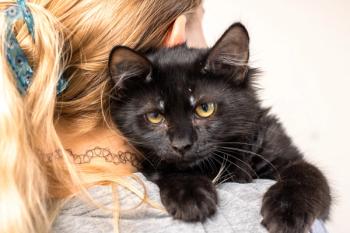
- dvm360 June 2019
- Volume 50
- Issue 6
Updates and appointment reminders? Text, please!
When it comes to communicating with your veterinary clients, make sure youre speaking their languagethe language of texting.
'Wait, Dexter, does this poop emoji mean Cuddles' constipation appointment went fine ... or not?'
Why they did it
Pet ownership and expenditures in the United States have been exploding and show no signs of slowing down. According to results from the American Pet Products Association's
What they did
An anonymous online survey of pet owners was conducted from Oct. 9 through 29, 2018. Participants had to own a dog and/or a cat as well as a pet that required at least four consecutive hours of hospitalization in the past. Participants were asked how, and how frequently, they were given updates about their hospitalized pet as well as their personal preferences regarding updates. They were also asked whether they'd be willing to pay for updates if their pet were hospitalized. Also included in the survey were questions about actual and preferred methods of communication from the veterinary hospital regarding appointment confirmations.
Of the 1,031 survey respondents, 45% owned a dog, 24% owned a cat, and 32% owned both a dog and a cat-and all had a pet that had to be hospitalized for at least four hours. Most pets had been hospitalized overnight (41%), followed by four to eight hours (35%), two nights (10%) and longer than eight hours but not overnight (7%).
What they found
Medical updates. Most owners (n = 782; 76%) reported that they did receive updates about their pet during hospitalization. Nearly half of those received updates once daily (48%); 40% received twice-daily updates. For most of the remainder, three or more updates were provided per day. The number of updates correlated with the amount of time the pet was hospitalized-the longer the hospitalization, the less frequently the owner was updated.
By and large, owners reported that updates during pet hospitalization were appreciated and important. The update preferences for most owners of pets hospitalized for longer than 24 hours were either every four to six hours (35%) or every two to three hours (27%).
When their pet had been hospitalized in the past, clients reported that updates were provided primarily by phone (90%), but practices also communicated via text (13%), email (5%), video (1%) and “other” ways (3%). The owners' reported communication preferences for receiving updates during hospitalizations were phone call (42%) and text message (38%).
Of those who reported that updates were important to them, more than half said they would be willing to pay an additional percentage of the pet's hospital bill to receive updates: 24% would pay 3%, 20% would pay 5%, and 10% would pay 10%.
Appointment reminders. More than half of the surveyed pet owners currently receive appointment reminders via phone (57%); a quarter (25%) receive reminders via text. But pet owner preferences are actually the reverse: 52% would prefer to receive reminders via text, while 29% would prefer phone calls.
Take-home message
It's clear that when it comes to communication from veterinary hospitals, what pet owners want is not necessarily what they get.
Because millennials are such a large part of the veterinary practice client base, it's particularly important to meet their communication needs. This group values convenient and accessible communication options.
To satisfy these clients' desires, more practices need to
This article was updated October 21, 2022.
Reference
1. Kogan L, Schoenfeld R, Santee S. Medical updates and appointment confirmations: pet owners’ perceptions of current practices and preferences. Front Vet Sci 2019;6:80.
Articles in this issue
over 6 years ago
Voting for 2019 American Humane Hero Award now openover 6 years ago
A veterinary hospital to be seen inover 6 years ago
Checklist: Better communication as a veterinarianover 6 years ago
Walmart expanding walk-in pet clinic and pet pharmacy offeringsover 6 years ago
Letter to dvm360: Should non-DVMs 'fire' veterinary clients?over 6 years ago
UC Davis study: Homemade feline diets nutritionally inadequateover 6 years ago
Hope or hoax? How to evaluate veterinary cancer therapiesover 6 years ago
Shelter Snapshot: 9 ways to up your spay/neuter gameNewsletter
From exam room tips to practice management insights, get trusted veterinary news delivered straight to your inbox—subscribe to dvm360.




